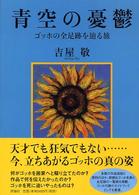基本説明
This collection of articles highlights a selection of on-going research projects. Phonological, morphological and syntactic issues are addressed by international experts on Maltese and sundry languages. The diachronic development of Maltese, its age-long contact with Italo-Romance and the present diglossic situation with co-official English are the topics of a variety of contributions to this volume. A project on the sociolinguistics of non-native Maltese-English is presented.
Full Description
This collection of articles highlights a selection of on-going research projects. Phonological, morphological, and syntactic issues are addressed by international experts on Maltese. The diachronic development of Maltese, its age-long contact with Italo-Romance, and the present diglossic situation with co-official English are the topics of a variety of contributions to this volume. The repercussions that the promotion of Maltese to the status of official working language of the EU has on the Maltese lexicon are discussed. A project on the sociolinguistics of non-native Maltese-English is presented. The problems posed by the creation of electronic resources for Maltese are equally focused upon. The papers amply demonstrate that Maltese Linguistics can stand on its own outside the traditional field of Oriental Studies.
Contents
1. List of contributors; 2. Preface; 3. Part I. Typology; 4. Maltese and the World Atlas of Language Structures (by Comrie, Bernard); 5. Part II. Phonology; 6. Vowel duration and Maltese 'gh' (by Hume, Elizabeth); 7. On Maltese prosody (by Vella, Alexandra); 8. Part III. Syntax; 9. Topicalisation in Maltese (by Borg, Albert); 10. A head-driven phrase structure grammar for Maltese (by Muller, Stefan); 11. Complex predicates in Maltese: From a neo-Arabic perspective (by Maas, Utz); 12. Splitting the verb chain in modern literary Maltese (by Stolz, Thomas); 13. "Pseudo-verbs": An analysis of non-verbal (co-)predication in Maltese (by Peterson, John); 14. Part IV. Lexicon and electronic resources; 15. Compounding and adjective-noun compounds in Maltese (by Fabri, Ray); 16. Auditory and visual lexical decision in Maltese (by Ussishkin, Adam); 17. Electronic language resources for Maltese (by Rosner, Michael); 18. Part V. Language change and contact; 19. The Vowel system of Cantilena: Its historical development (by Yoda, Sumikazu); 20. The shaping of Maltese throughout the centuries: Linguistic evidences from a diachronic-typological analysis (by Mori, Laura); 21. "Imma l'original originali?": A noun-adjective opposition in some Maltese word-classes of Romance origin (by Mifsud, Manwel); 22. A different kind of gender problem: Maltese loan-word gender from a typological perspective (by Stolz, Christel); 23. Terminology of Italian origin used in EU Maltese: A case of linguistic "Europeanisation"? (by Caruana, Sandro); 24. Part VI. Sociolinguistics; 25. Diglossia: Variation on a theme (by Grima, Antoinette Camilleri); 26. Maltese English: History of use, structural variation and sociolinguistic status (by Bonnici, Lisa M.); 27. Index of authors; 28. Index of languages; 29. Index of subjects








